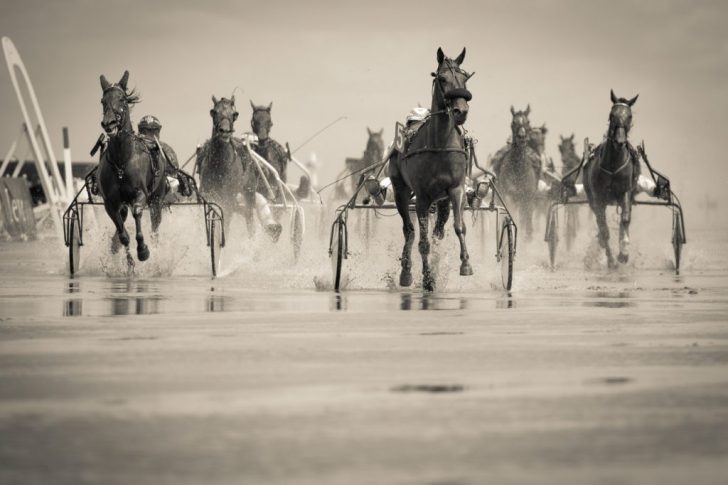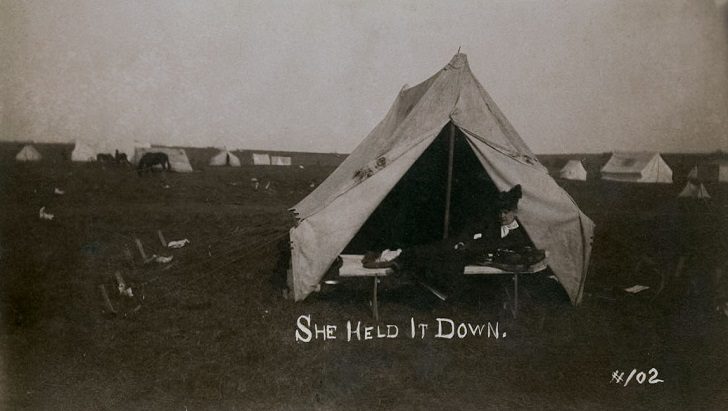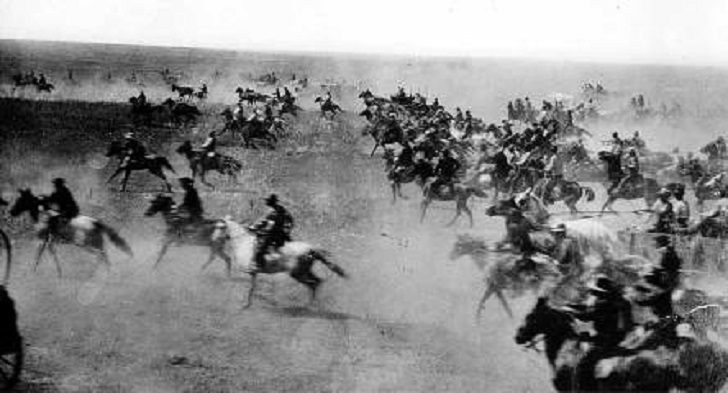At precisely twelve noon on September 16, 1893, a cannon boom unleashed the largest land rush America ever saw. Carried by all kinds of transportation, including horses, wagons, trains, bicycles, or on foot, an estimated 100,000 raced to claim plots of land in an area in northern Oklahoma Territory known as the Cherokee Strip. There had been several previous land rushes in the Territory, but this was the big one.
The nearly two million acres of land opened up to white settlements were located in Indian Territory, a large area that once encompassed much of modern-day Oklahoma. Initially considered unsuitable for white colonization, the Indian Territory was considered an ideal place to relocate Native Americans who were removed from their traditional lands to make way for white settlement. The relocations began in 1817, and by the 1880s, Indian Territory was a new home to various tribes, including the Chickasaw, Choctaw, Cherokee, Creek, Cheyenne, Commanche, and Apache.

By the 1890s, improved agricultural and ranching techniques led some white Americans to realize that Indian Territory land could be valuable, and they pressured the U.S. government to allow white settlement in the region. In 1889, President Benjamin Harrison agreed, making the first of a long series of authorizations that eventually removed most of Indian Territory from Indian control.

By the time of the Oklahoma land rush of 1893, America was in the grip of the worst economic depression it had ever experienced. This was one of the factors that swelled the number of expectant land-seekers that day. Many would be disappointed. Only 42,000 parcels of land were available – far too few to satisfy the hopes of all those who raced for land that day. Additionally, many of the “Boomers” – those who had waited for the cannon’s boom before rushing into the land claim – found that a number of the choice plots had already been claimed by “Sooners” who had snuck into the land claim area before the race began. The impact of the land rush was immediate, transforming the land almost overnight.
Sooners

One major land rush occurred in Oklahoma on April 22, 1889. Around 50,000 people lined up to claim around 2,000,000 acres of prime land. At high noon they were allowed to enter the area and claim the land. Some people snuck onto the land early and hid to lay claim to the best land areas first. These people were nicknamed “Sooners”. Today the mascot for the University of Oklahoma is the Sooner.
Around 10,000 homesteaders settled around the area that is today Oklahoma City. The next day, April 23, 1889, the city was established with a population of over 10,000 people. It would later become the capital of the state of Oklahoma.




